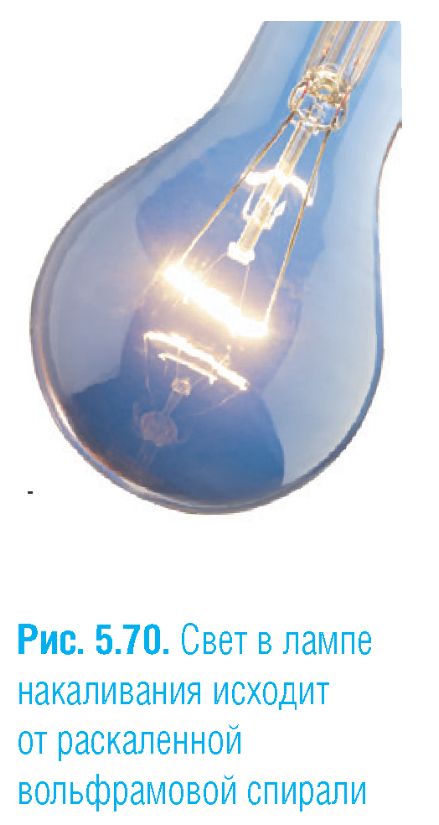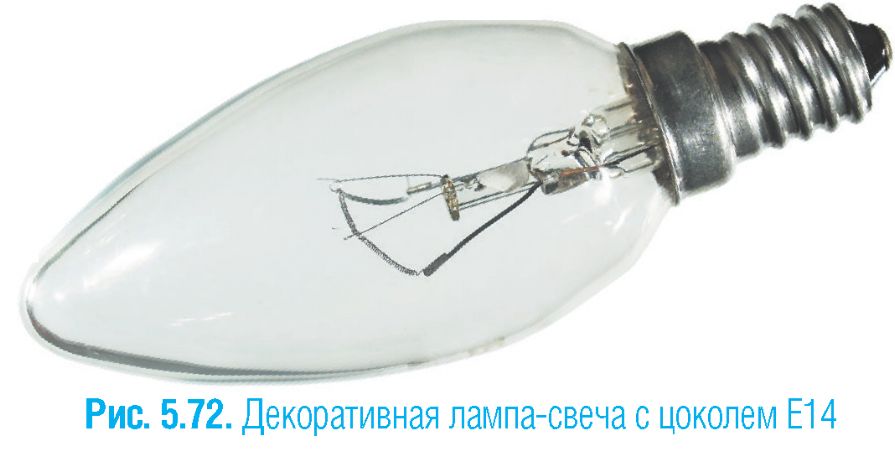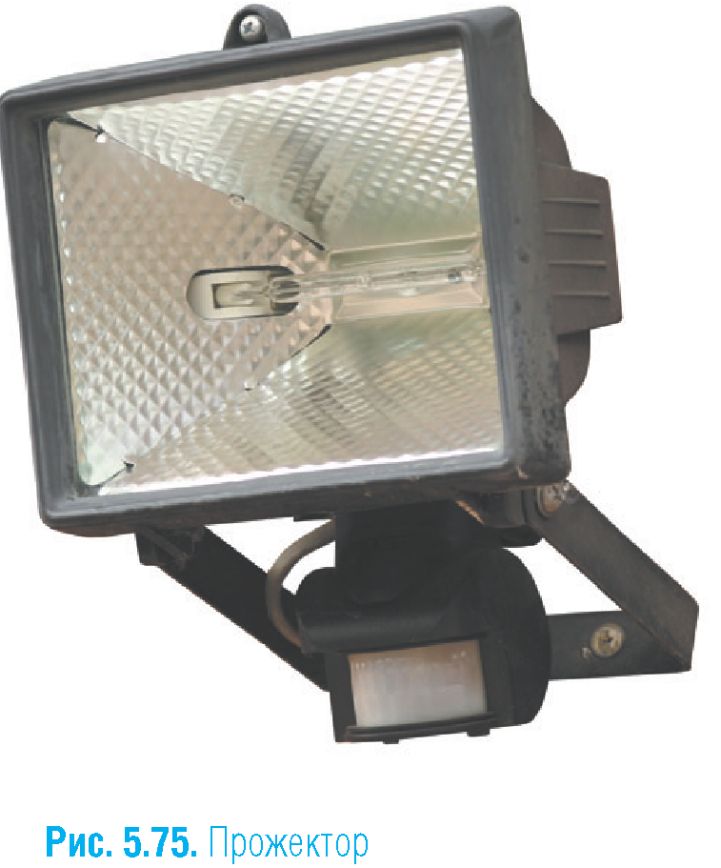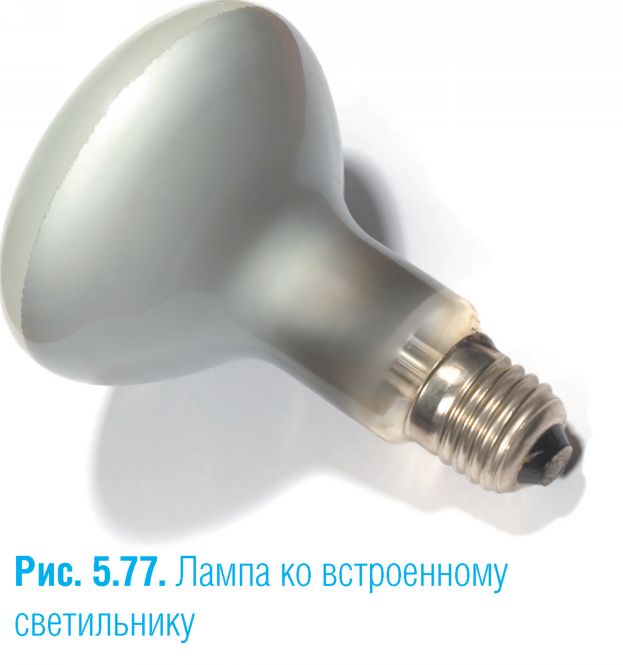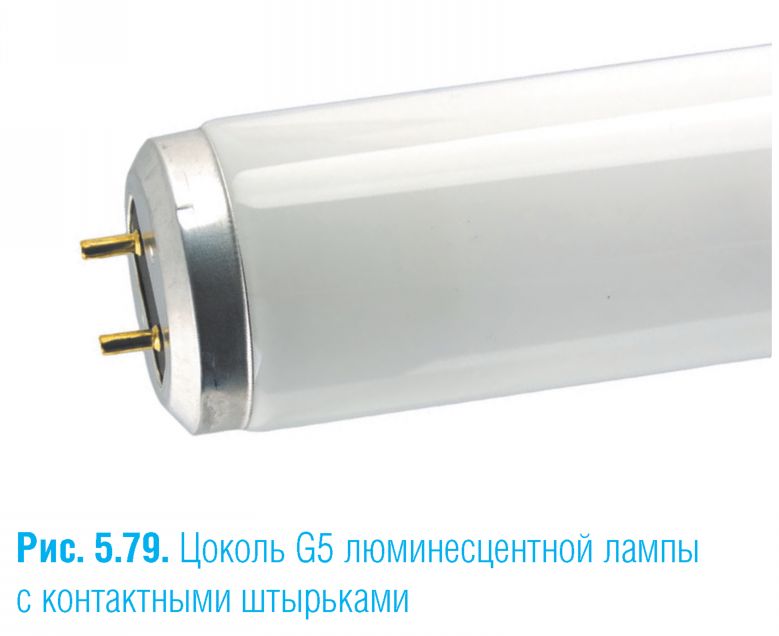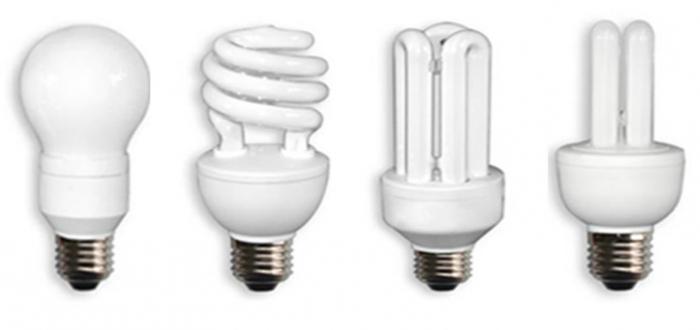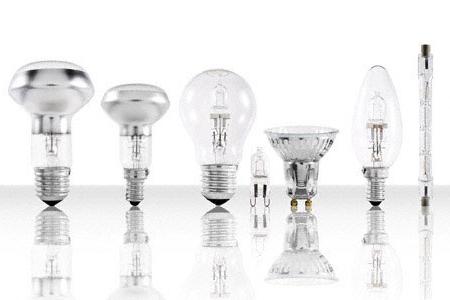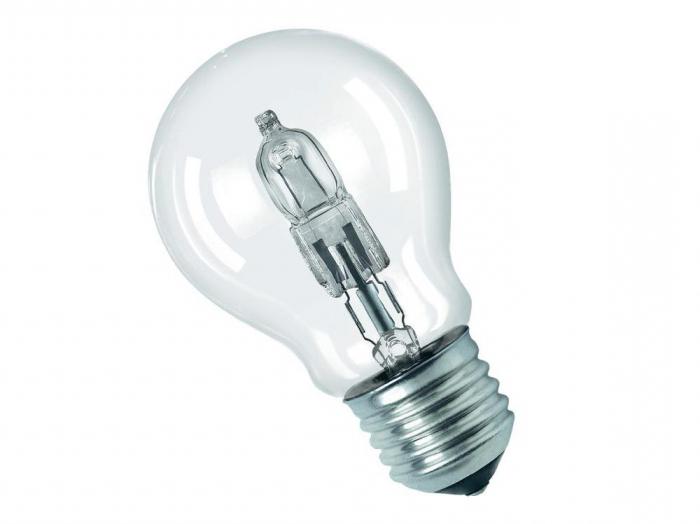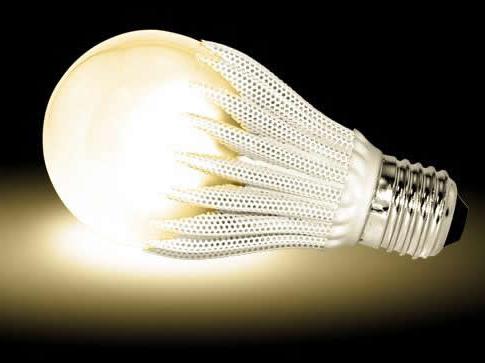Types of lamps - what are electric lamps, and where are they used. Types of light sources. All types of electric lamps for household lighting
Among all wiring and wiring products, lighting equipment has the richest assortment. This is because lighting elements carry not only purely technical characteristics, but also design elements. The possibilities of modern lamps and fixtures, their design variety are so great that it is not surprising to get confused (Fig. 5.66).
For example, there is a whole class of luminaires designed exclusively for plasterboard ceilings. Numerous types of lamps have a different nature of light and are operated in different conditions. To figure out what type of lamp should be in one place or another and what are the conditions for its connection, it is necessary to briefly study the main types of lighting equipment.
All lamps have one common part: the base, with which they are connected to the lighting wires. This applies to those lamps in which there is a base with a thread for mounting in the cartridge. The dimensions of the base and cartridge have a strict classification.
You need to know that in domestic conditions lamps with 3 types of socles are used: small, medium and large. In technical language, this means E14, E27 and E40. Base, or cartridge,
In addition to the socles that are screwed into the cartridge with a thread, there are other types. They are of the pin type and are called G-bases. Used in compact fluorescent and halogen lamps to save space. Using 2 or 4 pins, the lamp is attached to the lamp socket (Fig. 5.68).
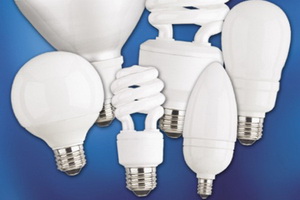
Table 5.8. Light output of lamps different types |
||||||||||||||||
|
There are many types of G-socles. The main ones are: G5, G9, 2G10, 2G11, G23 and R7s-7.
On fixtures and lamps, information about the base is always indicated. When choosing a lamp, it is necessary to compare these data.
Power is one of the most important characteristics lamps. On the cylinder or base, the manufacturer always indicates the power on which the luminosity of the lamp depends. It's not the level of light it's emitting. In lamps of different nature of light, power has a completely different meaning. For example, an energy-saving lamp with a specified power of 5 W will shine no worse than an incandescent lamp of 60 W. The same applies to fluorescent lamps. The luminosity of a lamp is measured in lumens. As a rule, this is not indicated, so when choosing a lamp, you need to focus on the advice of sellers or look at the table. 5.8.
Luminous output means that for 1 watt of power, the lamp gives so many lumens of light. The table shows that an energy-saving compact fluorescent lamp is 4-9 times more economical than incandescent. It can be easily calculated that a standard lamp of 60 W gives about 600 lm, while a compact one has the same value at a power of 10-11 W. So it will be more economical in terms of energy consumption. incandescent lamp(JIOH) the very first source of electric light that appeared in the home. It was invented back in the middle of the 19th century, and although it has undergone many reconstructions since that time, the essence has remained unchanged. Any LON consists of a vacuum glass container, a base on which contacts and a fuse are located, and an incandescent filament that emits light fig. 5.69).
The incandescent spiral is made of tungsten alloys, which easily withstand the working combustion temperature of +3200 ° C (Fig. 5.70). So that the thread does not instantly burn out, in modern lamps some inert gas, such as argon, is pumped into the cylinder.
The principle of operation of the lamp is very simple. When a current is passed through a conductor of small cross section and low conductivity, part of the energy is spent on heating the conductor spiral, which makes it glow in visible light. Despite such a simple device, there are a lot of types of LON. They differ in shape and size (Fig. 5.71).
Decorative lamps (candles): the balloon has an elongated shape, stylized as an ordinary candle (Fig. 5.72). As a rule, they are used in small lamps and sconces.
Painted Lamps: The glasses of the bulbs are in various colors for decorative purposes. Mirror lamps are called lamps, part of the glass cylinder of which is covered with a reflective composition to direct light in a compact beam. These lamps are most often used in ceiling lights to direct the light down without illuminating the ceiling. Local lighting lamps work with voltages of 12, 24 and 36 V. They consume little energy, but the lighting is adequate. Used in hand lamps, emergency lighting, etc. |
LON still remain in the forefront of the light source, despite some shortcomings. Their disadvantage is a very low efficiency - no more than 2-3% of the energy consumed. Everything else goes to heat. The second disadvantage is that LONs are unsafe from a fire point of view. For example, an ordinary newspaper, if placed on a 100 W light bulb, flares up in about 20 minutes. Needless to say, in some places LON cannot be operated, for example, in small lampshades made of plastic or wood. In addition, such lamps are short-lived. The service life of LON is approximately 500-1000 hours. The advantages include low cost and ease of installation. LON do not require any additional devices for operation, like luminescent ones. Halogen lamps not much different from incandescent lamps, the principle of operation is the same. The only difference between them is the gas composition in the cylinder (Fig. 5.73). In these lamps, iodine or bromine is mixed with an inert gas. As a result, it becomes possible to increase the temperature of the filament and reduce the evaporation of tungsten. That is why lamps can be made more compact, and their service life is increased by 2-3 times.
However, the glass heating temperature rises very significantly, so halogen lamps are made of quartz material. They do not tolerate contamination on the flask. It is impossible to touch the cylinder with an unprotected hand - the lamp will burn out very quickly. Linear halogen lamps are used in portable or fixed spotlights. They often have motion sensors (Figures 5.74 and 5.75).
Such lamps are used in drywall constructions. Compact lighting devices have a mirror finish (Fig. 5.76-5.77).
|
The disadvantages of halogen lamps include sensitivity to voltage drops. If it "plays", it is better to purchase a special transformer that equalizes the current strength. Principle of operation fluorescent lamps seriously different from LON. Instead of a tungsten filament in a glass bulb of such a lamp, mercury vapor burns under the influence of electric current(Fig. 5.78).
The light of a gas discharge is practically invisible, since it is emitted in the ultraviolet. The latter makes the phosphor, which covers the walls of the tube, glow. We see this light. Externally and by the method of connection, fluorescent lamps are also very different from LON. Instead of a threaded cartridge, there are two pins on both sides of the tube, which are fixed as follows: they must be inserted into a special cartridge and rotated in it (Fig. 5.79). Fluorescent lamps have a low operating temperature. You can safely lean your palm against their surface, so they are installed anywhere. Large surface glow creates an even diffused light. That is why they are sometimes called lamps. daylight(Fig. 5.80). In addition, by varying the composition of the phosphor, it is possible to change the color of the light emission, making it more acceptable to human eyes. In terms of service life, fluorescent lamps exceed incandescent lamps by almost 10 times. |
The disadvantage of such lamps is the impossibility of direct connection to the mains. You can’t just throw 2 wires on the ends of the lamp and plug the plug into the outlet. To turn it on, special ballasts are used. This is due to the physical nature of the glow of the lamps. Along with electronic ballasts, starters are used, which, as it were, set fire to the lamp at the moment of switching on (Fig. 5.81).
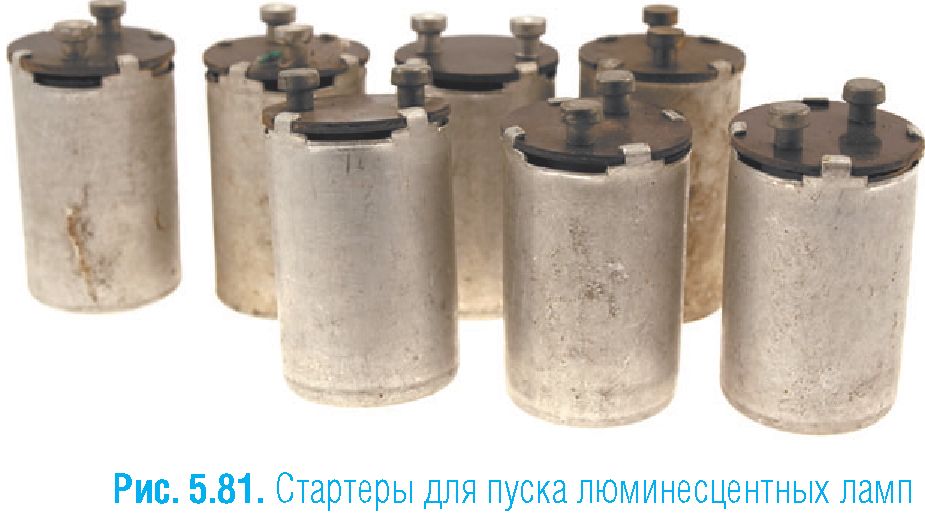
Most luminaires for fluorescent lamps are equipped with built-in glow mechanisms like electronic ballasts (ballasts) or chokes.
The labeling of fluorescent lamps is not like the simple LON designations, which have only a power indicator in watts. For the lamps in question, it is as follows:
L B - white light;
LD - daylight;
LE - natural light;
LHB - cold light;
LTB - warm light. The numbers following the letter marking indicate: the first digit is the degree of color rendering, the second and third are the glow temperature. The higher the color rendering level, the more natural the lighting is to the human eye.
Consider an example related to the glow temperature: a lamp marked L B840 means that this temperature is 4000 K, the color is white, daylight. The following values decipher the labeling of the lamps: 2700 K - super warm white, 3000 K - warm white, 4000 K - natural white or white, more than 5000 K - cold white (daylight).
IN Lately appearance on the market compact fluorescent energy saving lamps made a real revolution in lighting technology (Fig. 5.82).
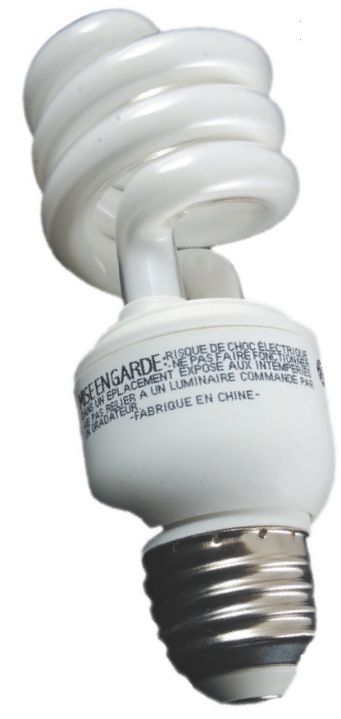
Rice. 5.82. Compact fluorescentenergy-saving lamp with gear
The main disadvantages of fluorescent lamps were eliminated - their bulky size and the inability to use conventional rifled cartridges. Ballasts were mounted in a lamp base, and a long tube was coiled into a compact spiral. Now the variety of types of energy-saving lamps is very large. They differ not only in their power, but also in the shape of the discharge tubes (Fig. 5.83).
The advantages of such a lamp are obvious: there is no need to install an electronic ballast for starting, using special lamps (Fig. 5.84). An economical fluorescent lamp has replaced the usual LON. However, like all fluorescent lamps, it has its drawbacks.
Several cons:
Such lamps do not work well at low temperatures, and at -10 ° C and below they begin to shine dimly;
Long start-up time - from several seconds to several minutes;
A low-frequency hum is heard from the electronic ballast;
Do not work together with dimmers;
Relatively expensive;
They do not like frequent switching on and off;
The composition of the lamp contains harmful mercury compounds, so it requires special disposal;
If you use backlight indicators in the switch, this lighting equipment starts to flicker.
No matter how hard manufacturers try, the light of fluorescent lamps is not yet very similar to natural and hurts the eyes.
In addition to energy-saving lamps with gear, there are many varieties without a built-in electronic ballast. They have completely different types of base (Fig. 5.85).
Rice. 5.85. Compact fluorescent lampwithout ballast is usually used in luminaires,equipped with electronic ballast
The principle of the glow of an arc mercury lamp high pressure(DRL) - arc discharge in mercury vapor (Fig. 5.86). Such lamps have a high luminous efficiency - 50-60 lm per 1 W. They are launched with the help of PRA. The disadvantage is the emission spectrum - their light is cold and harsh. DRL lamps are most often used for street lighting in lamps of the "cobra" type (Fig. 5.87).
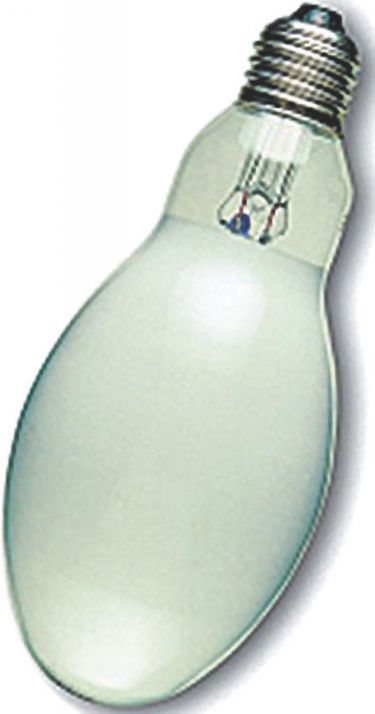 Rice. 5.86. DRL lamp
Rice. 5.86. DRL lamp
LED bulbs- This high-tech product was first designed in 1962. Since then, LED lamps have been gradually introduced into the lighting product market (Fig. 5.88).
 |
Rice. 5.88. The LED flashlight is characterizedbright light and extremely low energy consumption |
According to the principle of operation, an LED is the most common semiconductor, in which part of the energy in transition p-n is dumped in the form of photons, that is, visible light. These lamps are simply amazing. They are ten times superior to LON in all indications: durability, light output, efficiency, strength, etc. (Fig. 5.89).
They have only one "but" - this is the price. It is approximately 100 times the price of a conventional incandescent lamp. However, work on these unusual light sources continues, and we can expect that we will soon rejoice at the invention of a cheaper sample than its predecessors.
NOTE!
Due to the unusual physical characteristics of LEDs, real compositions can be made from them, for example, in the form of a starry sky on the ceiling of a room. It is safe and does not require much energy.
When buying a lamp, it is important to know what type of lamp is suitable for it, because in the vast majority of cases it is not included with the lighting fixture. Today, lamps are presented in stores in a large assortment. They differ in shape, size, power consumption and plinth. A base is a part of an electric light bulb that allows it to be mounted in a lamp socket, and through which current is supplied.
Plinths are made of metal or ceramic. Inside they are filled with electrodes (part of the lamp), and outside there are contacts. For each lamp, a specific socket is used, in which a lamp with a suitable base is installed. Before buying a chandelier, it is important to know what type of cartridge is suitable for it, and, accordingly, which lamp.

In addition, the lamps have to be changed periodically, as they are not durable. To do right choice and not to get confused in all the variety of light sources, it is important to know what types of light bulbs and types of socles exist. In addition to the base, when buying a lamp, it is also important to take into account the maximum lamp power, voltage, dimensions and chandelier connection scheme.
What are plinths
Due to the variety of socles known today, a classification has been developed, according to which all types of lamp socles are usually divided into groups. Among them, two groups are considered the most common: threaded and pin.
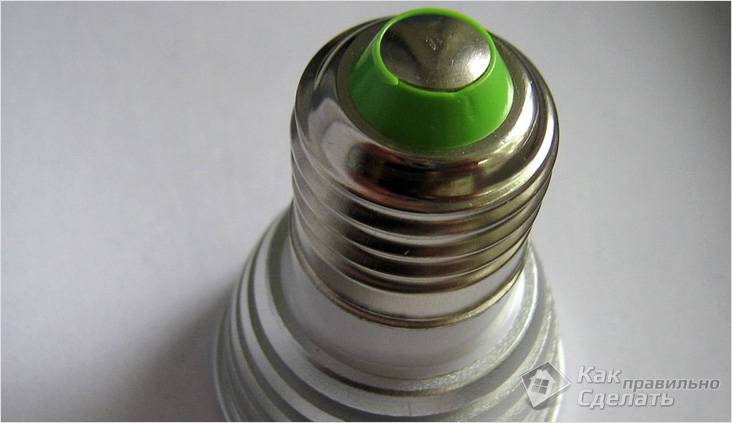
The threaded base is considered traditional, or, as it is also called, the screw base. It is denoted by the Latin letter E. The threaded base is widely used for many types of lamps, including household ones. The letter, as a rule, is followed by a number, it indicates the diameter of the thread. The most common screw bases are designated E14 and E27. For high-power lamps, there are also bases, for example, E40.
A little less popular is the pin base, it is denoted by the letter G, which shows the gap between the contacts in millimeters. The scope of the pin base is also wide - suitable for many lamps: halogen, fluorescent and ordinary incandescent lamps.
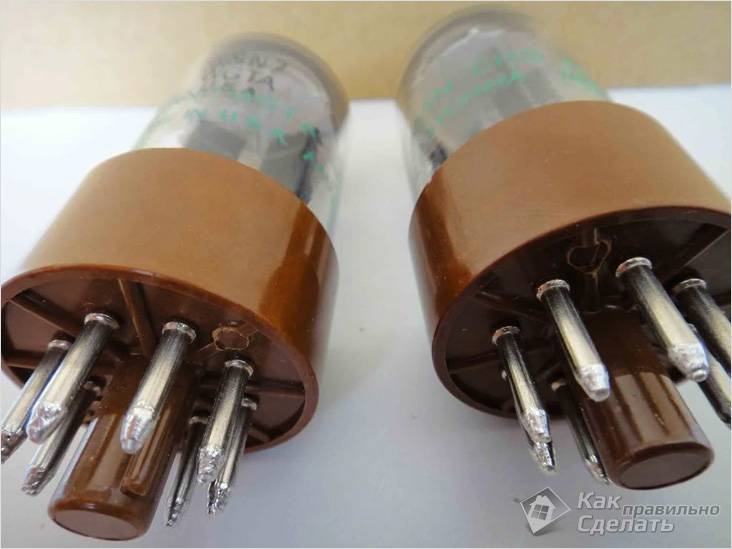
In addition to the traditional ones, there are several more types of socles that are less common, but, nevertheless, are used for various types of lamps.
- Plinths with recessed contact (R). They are used mainly for high-intensity appliances that operate on alternating current.
- Pin (B). They allow you to quickly replace the lamp in the cartridge due to asymmetrical side contacts. They are an improved analogue of threaded plinths.
- With one pin (F). Such plinths come in three subspecies: cylindrical, corrugated and special shape.
- Soffit (S). Most often, light bulbs with such a base are used in hotels and cars. Their distinguishing feature is the two-way arrangement of contacts.
- Fixing (P). Scope - special spotlights and lanterns.
- Telephone (T). They are equipped with control panel lamps, backlights, signal lamps in automation panels.
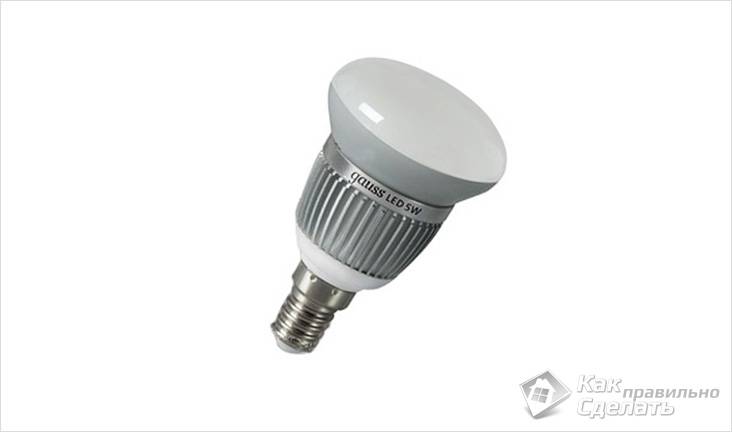
Often the marking of the lamp consists of more than one letter. The second letter usually indicates a subspecies of the lighting device:
- V - base with a conical end
- U - energy saving
- A - automotive.

In this video, a specialist will talk in detail about the different types of plinths:
Types of light bulbs
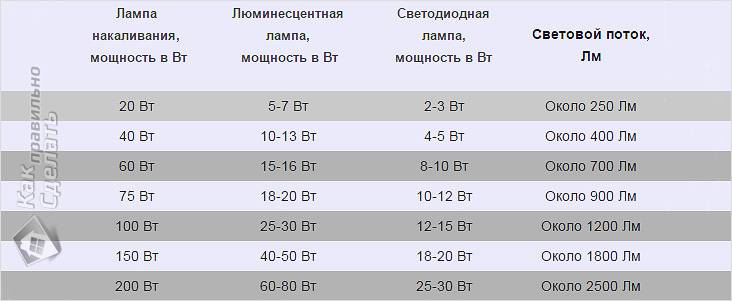
We will talk about the most common lighting lamps, those that are commonly used in home and industrial premises. These include incandescent, halogen, energy-saving, fluorescent and LED lamps.
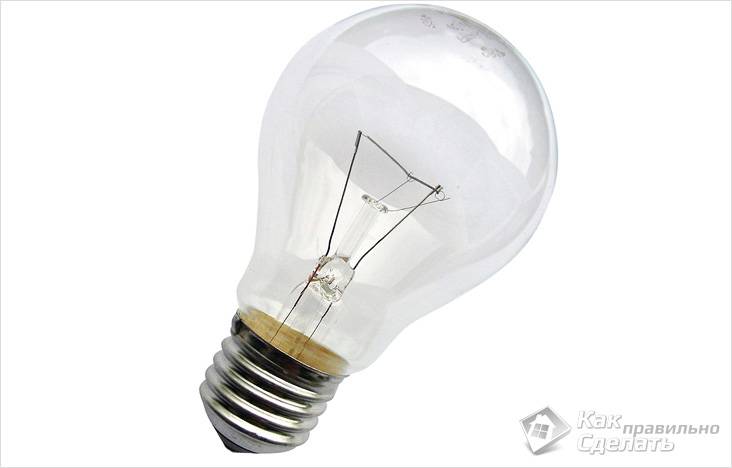
It is rightfully considered the most massive of all types of lamps and is probably familiar to everyone. It has gained popularity due to its low cost, simplicity of design and familiarity. It is used in the simplest models of lamps. However, despite its wide popularity, the incandescent lamp is inferior in terms of technical characteristics to its "brothers". Its service life is approximately 1000 hours, but this is not the most serious drawback. The fact is that during operation, vapors are formed inside the lamp, which provoke clouding of the bulb, so the brightness decreases over time. The color rendering index is approximately 90%. The predominant tones in the glow spectrum are yellow, so the light from an ordinary incandescent lamp resembles sunlight. Most, if not all, incandescent lamps come with E14 and E27 bases.

There are incandescent reflector lamps. Their main and only difference from ordinary lamps is the silver-plated surface. This helps direct the light to a specific point, which is why such lamps are used to create directional light. In stores you can find reflector lamps with the designation R50, R63 and R80, where the number is the diameter of the lamp. Also, like simple incandescent lamps, reflex lamps have an E14 or E27 threaded base.
Halogen lamp
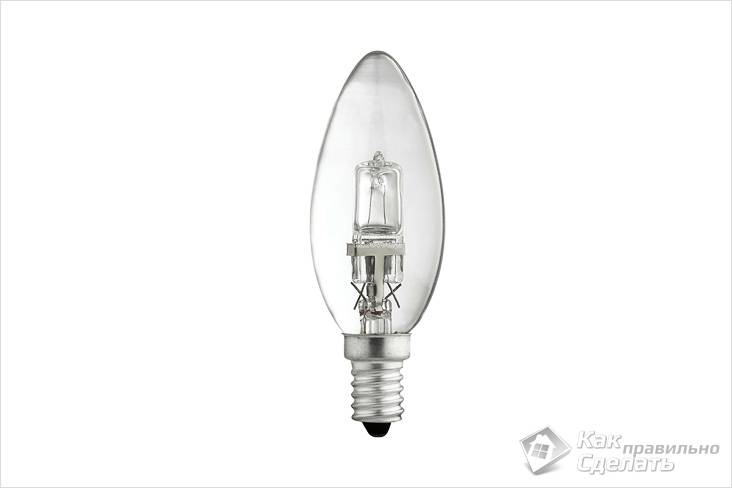
Able to last four times longer than an incandescent lamp. Its life span is approximately 4000 hours. Color rendering index - 100%. The technological process for the production of halogen lamps involves the addition of a certain amount of iodine or bromine. This contributes to a better light output, which is 20-30 lumens / watt. Moreover, a consistently high light output is maintained throughout the entire period of operation and does not decrease, as with a conventional incandescent lamp.
Being smaller in size than conventional lamps, they are more diverse in shape, respectively, their scope is wider. Their bases can be as follows: G9, G4, R7S, GU10.
Energy-saving lamps

This term is usually used when talking about a small fluorescent lamp. Such light bulbs have gained extraordinary popularity due to the fact that they can reduce energy costs. They are sold everywhere, and install them in place old lamp incandescent is not a problem, since it does not require any alterations.
Thanks to the latest production technologies, energy-saving lamps have a compact size, various power options, a variety of shapes, but consistently long life and efficiency. However, it is important to remember that such lamps "do not like" frequent switching on and off. There is an opinion that this shortens their life.
Today, compact energy-saving lamps can be purchased with almost all types of socles: E14, E27, GU10, G9, GU5.3, G4, GU4.
Fluorescent lamps

They are sometimes called tubular or linear due to their characteristic shape. The T on the tube is the diameter, and the number after it is the diameter in inches (eighths). For example, T12 (diameter 12/8 inch=3.8 cm).

LED bulbs
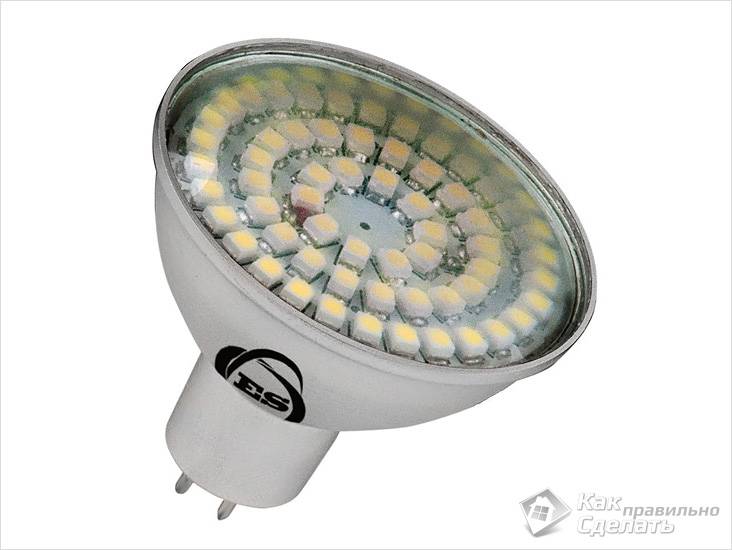
The term "energy-saving" is also applicable to them, but this is not their main advantage. The main thing is an incredibly long service life, which ranges from 25,000 to 100,000 hours. If we translate this number into years, we get 3-12 years of continuous work. Light output is almost 100%.

In addition, LEDs do not heat up to a significant extent, so it is advisable to use such lamps in rooms where the temperature regime is strictly observed. Standard plinths can be used LED lamps.
Video
This video demonstrates different types lamps:
The plinths themselves are made of metal or ceramic. Inside them there are contacts for supplying current to the working element of the lamp. Each luminaire is equipped with one or more lamp sockets. The bases of the purchased light bulbs must correspond in shape and size to them. Therefore, when buying a lamp, it is important to be guided by what types of light bulbs and types of socles are suitable for it.
In addition, most lamps need to be replaced from time to time as they do not last very long. In order to make the best choice and not get lost in all their diversity, it is important to know what types of lamps and types of socles generally exist. In addition to the base, when buying a lamp, you must also take into account the power consumption of the lamp, voltage, its dimensions and the connection scheme to the chandelier.
What are the types of plinths
There is a wide variety of types of lamp bases that are used today in certain areas. In this regard, there is their classification, according to which all types can be divided into several groups. At the same time, in Everyday life we most often encounter only two of them: threaded and pin. Let's take a closer look at each of these two types.
Screw base
It is considered traditional to consider a threaded base, or in another way - a screw base. It is marked with the Latin letter E. This type of base is widely used in many types of lamps, including most household ones. After the letter, there must be a number that indicates the diameter of the threaded connection. In household light bulbs, two sizes of threaded connection are used - E14 and E27. For more powerful lamps, for example, street lighting, there are E40 socles.
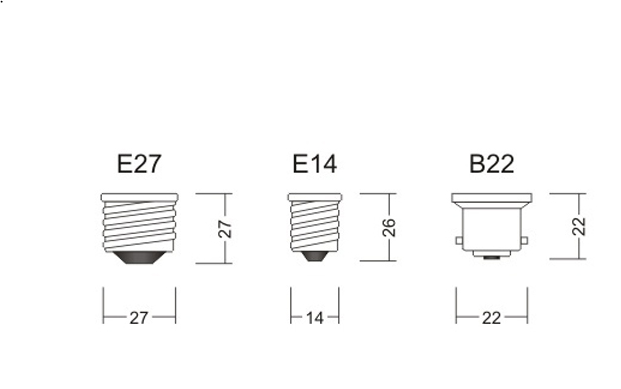
We are used to seeing the threaded type of the base in almost all home lighting fixtures. Most modern lamps are equipped with just such a connection design. It is considered the most convenient for general consumption. The dimensions of the threaded connections for lamps have not changed for several decades, so even modern light, which you purchased today, may well be screwed into an old rare chandelier from the 30s and 40s of the last century. This is very important for those who are fond of the revival of antiques.
In the US and Canada, plinth sizes are not the same as in Europe. This is due to the fact that there the voltage in the network is 110 V. Therefore, in order to avoid accidentally screwing in European bulbs, their diameter is: E12, E17, E26 and E39.
Pin base
This is also a fairly popular base, which is successfully used in various types of lamps. It consists of two metal pins that simultaneously play the role of electrical contacts. Holding the lamp in the socket is carried out by these pins, as they are inserted into the socket quite tightly. The pins can be different in diameter and distance between them. Hence the marking with the letter G, which means that this is a pin base, and the number after it determines the gap between the two pins. For example, plinths G4, G9 or G13.
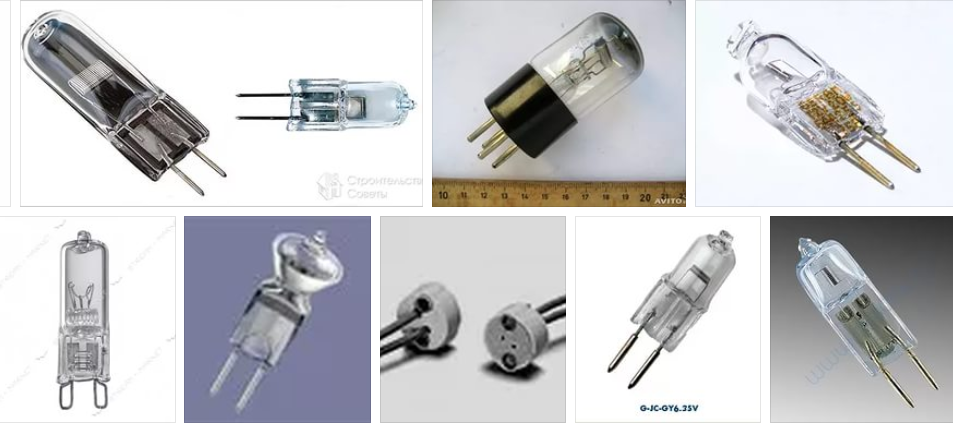
This type of base is found in almost all types of lamps: incandescent, fluorescent, halogen, LED.
In addition to the traditional ones listed above, there are several more rare types of socles that are less popular, but, nevertheless, are used in some types of lamps.
- Plinths with recessed contact (R). They are mainly used in high intensity appliances that are powered by alternating current.
- Pin bases (B) make it possible to most conveniently and quickly replace the light bulb in the cartridge due to the fact that their side contacts are asymmetrical. In fact, this is an improved analogue of the threaded type of base.
- Single-pin (F), which come in three different subspecies: cylindrical, with a corrugated surface and a special shape.
- Soffit bases (S) are used in lamps of various hotels and car lighting fixtures. They are distinguished by a peculiar bilateral symmetrical arrangement of contacts.
- Fixing (P) bases are used in special high-power spotlights and lanterns.
- Telephone (T) bases are equipped with light bulbs for various control panels, one or another backlight, signal lamps mounted in automation panels.
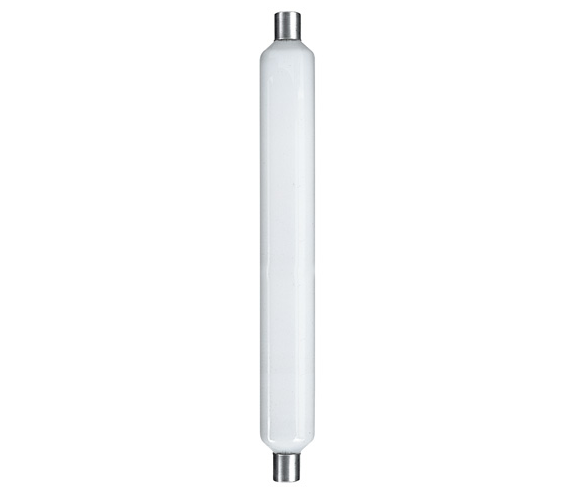
Often, available on the base, the marking of the lamp consists of several letters. The second letter most often means a subspecies of this lighting device:
- V - base with a conical end.
- U - energy-saving fluorescent.
- A - car light bulb.
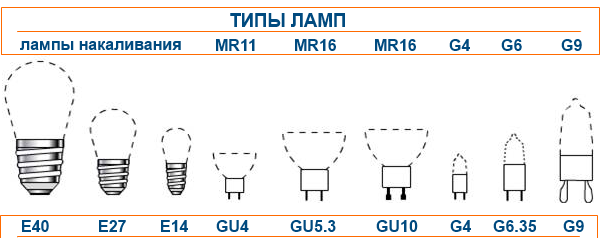
Types of lighting bulbs
We will talk about the most common lamps that we usually use at home, in offices and various industrial premises. These include incandescent, energy-saving, halogen, fluorescent and LED lamps. Let's take a closer look at each of these types.
Ordinary incandescent lamp
This is probably the most common lamp, despite the fact that its age is already more than 150 years old, and over the past 100 years it has hardly undergone significant changes, we still use it. The thing is that its production is very cheap, and the design is simple. It is a flask without air, in which a tungsten filament is placed. Under the influence of an electric current, it heats up to high temperatures and emits light. Modern incandescent lamps with a tungsten filament have one feature: when room temperature the resistance in the tungsten filament is very low, about 15 times lower than the working one, which increases the risk of its burnout when passing a stronger current at the moment of switching on. The first lamps used graphite filaments, the resistance of which, on the contrary, decreased with increasing temperature. This had the effect of gradually increasing the brightness. At the same time, graphite threads developed their resource faster.

According to their technical characteristics, incandescent lamps are much inferior to other types of lamps. The life of a typical light bulb is about 1000 hours. It is noteworthy that in the fire department of the small town of Livermore, California, there is a light bulb that has been continuously lit since 1901. This, of course, is an exception to the rule. In addition to a short service life, incandescent lamps become cloudy over time due to the vapors formed in the bulb. This greatly reduces their luminosity. Incandescent lamps emit yellow light, which is close to the spectral characteristics of sunlight. Almost all incandescent lamps are produced with E14 and E27 sockets. The exception is small light bulbs, which a couple of decades ago were screwed into lanterns and Christmas tree garlands. Today it is already difficult to find a cartridge for such light bulbs.
Among lamps of this type there are special reflector lamps. Their distinctive feature is silver plated inner surface flasks. Such devices are used to create a beam of directional light when it is necessary to illuminate an object. On store shelves there are reflector lamps that are marked R50, R63 and R80, where the number is the diameter of the lamp. As for the base, it is the same as that of simple incandescent lamps. Some light bulbs have frosted glass for more diffused light. There are also multi-colored lamps used to create various lighting effects.
Halogen lamp
Such a light bulb can last about four times longer than a conventional incandescent bulb. Manufacturers claim that its service life can be about 4000 hours, and the so-called color rendering index is 100%. According to its design, such a lamp is not much different from a conventional one, but vapors of substances such as iodine or bromine are added to the flask. This greatly improves light output and service life. Modern halogen lamps have a light output of 20-30 lm / watt, which is maintained throughout the intended life and is not lost over time, like a conventional incandescent bulb.

Most often, halogen lamps are much smaller than conventional ones in size. They have many different shapes, and plinths are: G9, G4, R7S, GU10. There are even halogen lamps built into the bulb of a conventional light bulb with an E27 base.

There is only one drawback with halogen lamps - this is low-frequency noise when used in conjunction with dimmers that control the luminosity. This type of lamp has found the widest application in the automotive industry. Modern car headlights are equipped with halogen lamps.
Fluorescent tube lamps
These light sources have a characteristic elongated shape in the form of a tube of various lengths and diameters. The latter is indicated by the letter T on the label. For example, T12 (diameter 12/8 inch=3.8 cm). For such lamps, special lamps with a starting device are required. It is required in order to create an electromagnetic field inside the bulb that can cause the phosphor to glow under the influence of mercury vapor. In such lamps, there are no incandescent parts, which significantly increases their efficiency and efficiency, since there is no need to heat up the substance and almost all of the energy is converted into a luminous flux. The bases of this type of lamp are most often pin and located on both sides of the bulb.
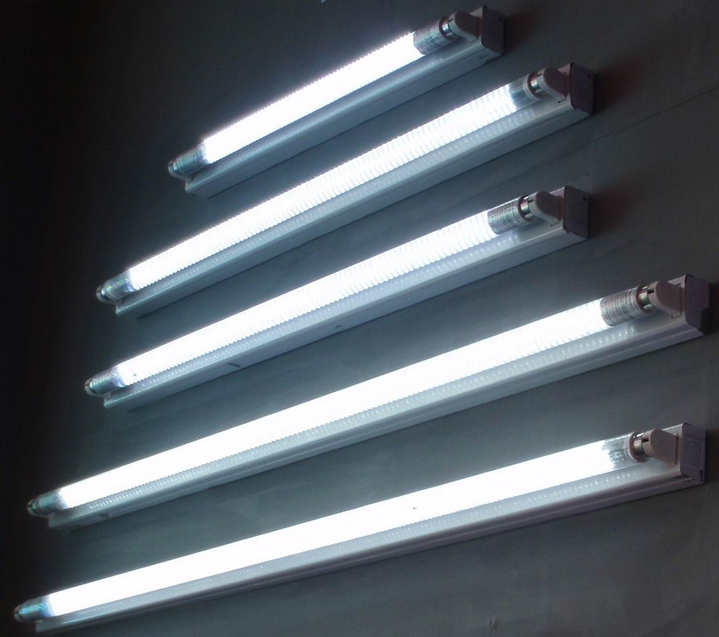
Energy saving types of lamps
This term is commonly used for small fluorescent lamps. They have gained high popularity today, as they are able to reduce energy costs very significantly. They are sold in any stores, and installing them in a regular threaded cartridge is not a problem, since they are equipped with the same bases.

Thanks to modern technological developments, energy-saving light bulbs have a very compact size, various power variations, a large variety of shapes, but definitely a long service life and extraordinary efficiency. However, it must be remembered that such lighting"do not like" too frequent switching on and off, and also, like all fluorescent lamps, require special disposal conditions, since the mercury vapor contained in them is very dangerous for humans and environment. Today there are energy-saving lamps with any type of socles: E14, E27, GU10, G9, GU5.3, G4, GU4.
They can also be called "energy-saving", but this is not their main advantage. With significant energy savings, they have a truly enormous service life, which can amount to tens of thousands of hours and years. From 25,000 to 100,000 hours, an LED lamp will last, which is equal to 3-12 years of continuous operation. In addition, their light output is almost one hundred percent. LEDs do not use heat, so these lamps are completely safe in the fire sense. Most LED lamps are equipped with standard sockets, which allows them to be used in any fixtures. They are completely environmentally friendly, as they do not contain any harmful substances.
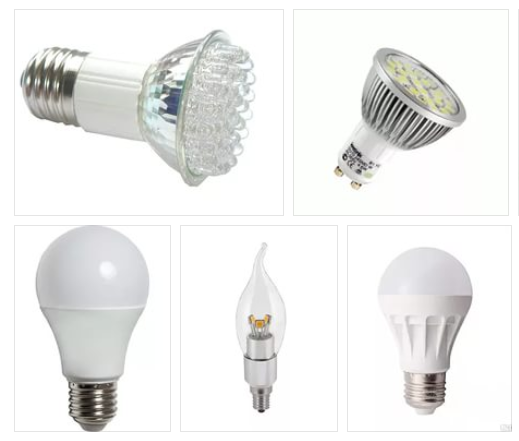
Of the shortcomings, only a very high cost should be noted. This, of course, is offset by a very long service life. It is not recommended to purchase cheaper LED lamps, because due to savings on capacitors, they shine with an invisible flicker, which in a hidden form affects vision. Another disadvantage can be considered shifted to the side of blue color radiation spectrum that does not correspond to natural sunlight. LEDs shine with a rather cold unnatural light.
Using energy-saving lighting sources can save a lot on electricity. At the same time, when buying them, you should be attentive to the choice of manufacturer and buy only well-known models, otherwise many advantages become not so obvious.
Each of us, when choosing lamps, has noticed more than once that there are just a huge number of them - different designs, power, bases of different shapes and much more. So, sometimes you think about whether to buy some new lamp, because, according to the manufacturer, there is no harm from it, and it saves electricity, and it shines quite brightly. Let's take a look at what types of light bulbs exist and how they differ from each other. We will also talk about which are more and which are less harmful to health.
General information
Currently on the market are a large number of various lighting lamps. The price between the cheapest and most expensive can vary significantly. At the same time, consumer and technological properties of the product also differ. In principle, sometimes it does not make much sense to purchase a lamp that is too expensive, but it happens that it is simply necessary. In any case, a lot depends on the operating conditions. For example, at elevated ambient temperatures, some lamps are used, at a high level of moisture - others, in frost - thirds, and so on. To date, there are the following types of light bulbs:
- incandescent;
- luminescent;
- halogen;
- LED.
Let's look at each group and find out how they differ from each other. Without a doubt, there is something to talk about.
Incandescent lamps
These are perhaps the most common and popular lamps. We can say that for a long time, they were out of competition in the market. However, now the situation has changed somewhat, but we will not talk about that. The power of such lamps ranges from 15 to 300 watts, and the shape can be different. Today they are represented by two varieties: these are krypton and bispiral. Krypton incandescent lamps use krypton gas. The power of such products is usually not higher than 100 watts and not lower than 40. Good light output can be distinguished from the advantages. 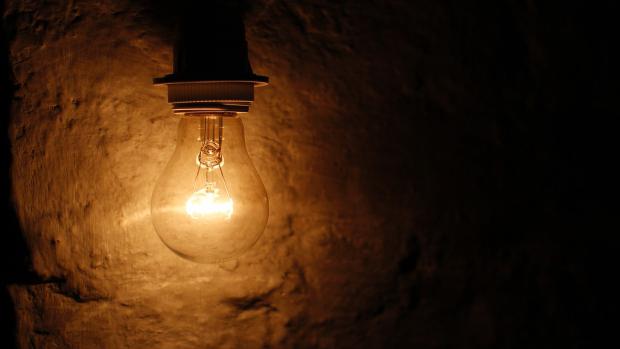
The second variety is bispiral lamps. They give light due to the tungsten filament, which has an arcuate shape. Usually the surface of the lamps is made transparent, but there are also mirror and opal. It makes sense to say that matting slightly worsens the light output, but at the same time makes the light more diffused. With such lighting, our eyes feel most comfortable and do not get tired. Now let's look at other types of light bulbs. First - about the most popular.
Fluorescent lamps
Behind last years fluorescent lamps are widely used. They have a number of significant advantages. Their power ranges from 8 to 80 watts. The principle of operation of the lamp is based on the effect of ultraviolet radiation on phosphors in a gaseous medium. It is safe to say that any kind of light bulbs of this type are pleasing to the eye, as they give a diffused and soft light.
Currently, fluorescent lamps are the main competitor of incandescent lamps. They are several times more economical. At the same time, at the same power, the luminous flux of fluorescent lamps is about 6-8 times higher. We can also say that their service life differs. In our case, it is about 10-20 times higher. By the way, there are also disadvantages that are inherent in all such lamps: firstly, they are sensitive to temperature changes, and secondly, they often flicker due to power surges.
Types of energy-saving light bulbs
We have already considered, and now let's talk about halogen bulbs. The key feature of such products is that they are very bright. It should be understood that they come in various forms. So, in some cases it is possible to achieve diffused light, in others - concentrated. It is also worth noting that such lamps are very small, for this simple reason they are extremely popular in the design of the room, as they are invisible and at the same time quite bright.
It should be noted that all types energy saving light bulbs, in particular halogen ones, do not tolerate the touch of human hands. This is due to the fact that a small amount of fat will remain on the surface, which in any case is present on the fingers and palms. When turned on, the lamp heats up intensively and a black spot appears in place of the fat, and this significantly reduces the resource, on average by 30-50%, it is impossible to say more precisely. At correct operation of these lamps is on top, however, sometimes there is a problem with the contacts, which often burn.
About LED lighting
All types are considered economical. We can say that they consume really little electricity, usually 50% less than incandescent lamps. Agree, with the same light intensity, this is just an excellent result. Such lamps have not only high luminous efficiency, but also a long service life. In fact, all this makes such lamps unique in their own way, and this is true. True, voltage drops in the network adversely affect the LEDs, which will instantly burn out.
Recently, interesting models of lamps began to appear on the market. Their main feature is the autonomy of the product. They turn on at nightfall and run on solar panels or conventional batteries. In addition, the lamps are not afraid of either low or too high temperatures. Their performance will not be affected.
What is a plinth?
In short, the base is a structural element of the lamp, which makes it possible to install it in the socket. But since some types of lamps do not provide for a classic cartridge, then the base, in fact, may be absent. In addition, it is used as a transmitter of electricity between the network and the lamp itself. Of course, often the base is made of metal, but in some cases it is made of ceramic. The outer part of the product contains contacts, and the inner part contains filaments and electrodes.
It must be understood that each lamp has its own type of cartridge, so only certain bulbs can be installed there. Types of socles are divided into threaded and pin. Threaded (screw) is more common in everyday life, however, for example, halogen lamps most often have a pin base. That is why before buying, always inspect the labeling of the light bulb. Types of socles can be learned to be distinguished by the letter on the case: G - pin base, E - threaded and so on.
Pin and base Edison
The pin base is usually equipped with halogen and LED lamps. We can say with confidence that this is a very popular and effective solution, which allows not only to instantly replace a burned-out lamp, but also to significantly reduce its dimensions. At the same time, a pair of metal pins provides good contact. But it is extremely important that the socket where the base is inserted is tight. If it is loose, then the lamp will constantly move away, and there is nothing good in this.
In principle, all types of electric light bulbs can work from such a base, the only exceptions are gas discharge ones. Edison base (screw) - the most reliable and common. It provides excellent contact and fits all household lamps and chandeliers, as it is standardized. This The best decision in terms of price / quality ratio.
Something about lampholders
The most common socket for electric lamps is E27. It is used for incandescent, LED and sometimes halogen lamps. In second place is E14, which differs from the one described above in a smaller diameter and thread. Usually low-power lamps are placed on it. Ceramics and special plastics are used as materials for manufacturing. The latter is less preferable, because due to high temperatures it can collapse, release dangerous gases and serve as a source of ignition. In Soviet times, the same types were used, but they were somewhat better. In any case, for normal operation, it is not recommended to install more powerful lamps than expected, as this will lead to the destruction of the cartridge.
More about lamps
We have already discussed with you the main types of light bulbs and types of socles. I would like to note that it is not recommended to buy non-standard lamps. This is due to the fact that it is problematic to install them in the cartridge. Moreover, they can fail, and it is difficult to find a replacement for them, and even more difficult to find a suitable cartridge. You need to understand that all types of category H car bulbs, and any other, are not used in everyday life, but they can be installed in the garage for additional lighting, etc.
Conclusion
Here we have considered the most interesting with you. Now you know what types of halogen fluorescent and others are. You need to understand that sometimes it is advisable to use one, and in other cases - the other. So, often many species are not used as the main lighting. They are suitable for illuminating dark places, etc. Nevertheless, some models are quite powerful and act as not only alternative, but also the main lighting. In principle, this is all that can be said about modern lamps, socles and cartridges for them.
Foreword
Properly selected types of lighting lamps can also save cash paying bills for consumed electricity.
Content

Household lighting lamps are an indispensable part of apartments. The types of electric lamps presented for sale allow you to create comfort in the room. All types of lamps have their own technical specifications which can be found on this page. Properly selected types of lighting lamps can also save money on paying bills for consumed electricity.
Lamps differ in the nature of light and operating conditions. However, they have one thing in common - a threaded base, with which they are connected to the lighting wires in the cartridge. The dimensions of the base and cartridge are strictly standardized. Information about the base is always given on fixtures and lamps.
Types of lamp bases
In domestic conditions, lamps with three types of socles are used: small, medium and large, or, in technical terms, E14, E27 and E40. The numbers in the title indicate the diameter of the base in millimeters. The most common base size is E27. The E14 base is often called "minion" (translated from French - "small"). The E40 base is used for street lighting lamps with a power of 300, 500 and 1000 W.
In addition to sockets that are screwed into the socket using a thread, there are types of sockets for pin-type lamps. They are called G-socles. Their main types are G5, G9, 2G10, 2G11, G23 and R7s-7. G-bases are used in compact fluorescent and halogen lamps to save space. Using two or four pins, the lamp is attached to the lamp socket.
Power of incandescent lamps
One of the most important characteristics of a lamp is the power of incandescent lamps. It is always indicated by the manufacturer on the cylinder or base, and the luminous flux that comes from the lamp and is calculated in lumens depends on it. Do not confuse the light output of a lamp with the level of light that it emits: an energy-saving lamp with a power of 5 watts will shine no worse than an incandescent lamp of 60 watts. As a rule, data on light output is not recorded anywhere, so when choosing a lamp, you need to focus on the advice of sellers or use the data in the table “Light output of different types of lamps”.
Table "Light output of different types of lamps"
| Lamp type | light output, lm/W |
| standard lamp incandescent |
7-17 |
| Kryptonian | 8-19 |
| Halogen | 14-30 |
| Mercury | 40-60 |
| fluorescent | 40-90 |
| Compact fluorescent | 40-90 |
| sodium | 90-150 |
Luminous output means that for 1 watt of power, the lamp gives a certain number of lumens of light. Based on the data in the table "Light output of different types of lamps", an energy-saving compact fluorescent lamp will be four to nine times more economical than an incandescent lamp. A standard 60 watt lamp gives about 600 lumens, while a compact one has the same value at 10 - 11 watts.
Electric incandescent lamps: types, characteristics, power and voltage in them
Electric incandescent lamps are the very first source of electric light that appeared in household use in the middle of the 19th century. Since that time, it has undergone many changes, but the principle of its work has remained the same.
All types of incandescent lamps consist of a vacuum glass bulb, a base on which contacts and a fuse are located, as well as an incandescent filament that emits light. The incandescent spiral is made of tungsten alloys, which can easily withstand the working combustion temperature of + 3200 °C. When a current is passed through a conductor of small cross section and low conductivity, part of the energy is spent on heating the conductor spiral, which makes it glow in visible light. To prevent the thread from burning out instantly, an inert gas, such as argon, is pumped into the cylinder of modern lamps.
Despite such a simple device, there are many types of incandescent lamps that differ in the shape, size and material of the cylinder. There are also different power of incandescent lamps from 40 to 250 W for domestic use. Large power incandescent lamps are used in industry.
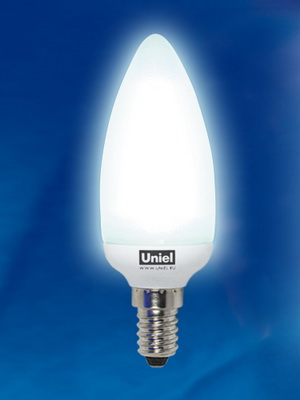
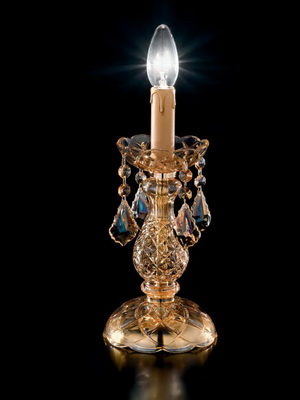
For example, decorative lamps (candles), in which the balloon has an elongated shape, stylized as a regular candle. As a rule, they are used in small lamps and sconces. The glasses of the colored lamps have different colors and are used for decorative purposes. In mirror lamps, part of the glass bulb is coated with a reflective compound to guide the light in a compact beam. Such lamps are most often used in ceiling fixtures to direct light down and not illuminate the ceiling. The voltage of an incandescent lamp is low enough and does not allow efficient conversion of thermal energy into a light beam. Local lighting lamps work with voltages of 12, 24 and 36 V. They are used in hand lamps, emergency lighting, etc. They consume little energy and therefore give low illumination.
Consider the characteristics of an incandescent lamp, which will help you choose the right type. LON is still popular, despite some shortcomings. The main one is a very low efficiency - no more than 2-3% of the energy consumed. The rest is used to generate heat. The second drawback is that LONs are unsafe from a fire point of view. For example, an ordinary newspaper, if placed on a 100 W light bulb, flares up in about 20 minutes. LON cannot be operated in small lampshades made of plastic or wood. In addition, such lamps are short-lived. Their service life is approximately 500-1000 hours. The advantages include low cost and ease of installation: LON does not require additional devices for operation.
Types of household halogen incandescent lamps
![]() Halogen incandescent lamps work on the same principle as incandescent lamps. The only difference between them is the gas composition in the cylinder. In such lamps, iodine or bromine is mixed with an inert gas. As a result, the temperature of the filament rises and the evaporation of tungsten decreases. That is why the service life of halogen lamps is two to three times longer than that of incandescent lamps, and the lamps themselves are more compact.
Halogen incandescent lamps work on the same principle as incandescent lamps. The only difference between them is the gas composition in the cylinder. In such lamps, iodine or bromine is mixed with an inert gas. As a result, the temperature of the filament rises and the evaporation of tungsten decreases. That is why the service life of halogen lamps is two to three times longer than that of incandescent lamps, and the lamps themselves are more compact.
Since the glass heating temperature rises very significantly, household halogen lamps are made of quartz material. They do not tolerate contamination on the flask: you should not touch the cylinder with an unprotected hand, otherwise the lamp will burn out very quickly. There are various types of halogen lamps, some of which are discussed further on this page.
Linear halogen lamps are used in portable or fixed spotlights, which are often equipped with motion sensors. Halogen lamps with a mirror coating are very often used in recessed fixtures mounted in plasterboard structures.
The disadvantages of halogen lamps include sensitivity to voltage drops. To avoid this, you should purchase a special transformer that equalizes the current strength.
Types of fluorescent fluorescent lamps
Types of fluorescent lamps according to the principle of operation differ significantly from LON. Under the influence of an electric current, mercury vapor burns in a glass bulb of such a lamp instead of a tungsten filament. The light of the gas discharge is practically indistinguishable, since it is emitted in the ultraviolet. The latter makes the phosphor, which covers the walls of the tube, glow. We see this light. Externally and by the method of connection, fluorescent lamps also differ significantly from LON. Instead of a threaded chuck, there are two pins on both sides of the tube that must be inserted into and rotated in a special chuck.
Types of fluorescent lamps have a low operating temperature.
 You can safely touch their surface. The large surface of the glow creates an even diffused light. That is why such lamps are sometimes called fluorescent lamps. In addition, by varying the composition of the phosphor, it is possible to change the color of the light emission, making it more acceptable to human eyes. In terms of service life, fluorescent lamps exceed incandescent lamps by almost 10 times.
You can safely touch their surface. The large surface of the glow creates an even diffused light. That is why such lamps are sometimes called fluorescent lamps. In addition, by varying the composition of the phosphor, it is possible to change the color of the light emission, making it more acceptable to human eyes. In terms of service life, fluorescent lamps exceed incandescent lamps by almost 10 times.
However, such lamps cannot be connected directly to the mains, due to the physical nature of their glow. You can’t just throw two wires on the ends of the lamp and plug the plug into the outlet. To turn it on, special electronic ballasts are used, as well as starters, which, as it were, set fire to the lamp at the moment of switching on. Most luminaires for fluorescent lamps are equipped with built-in glow mechanisms like electronic ballasts (ballasts) or chokes.
Marking of fluorescent lamps
Fluorescent lamps have the following markings:
- LB - white light;
- LD - daylight;
- LE - natural light;
- LHB - cold light;
- LTB - warm light.
The letter marking of a fluorescent lamp, as a rule, is followed by numbers: the first indicates the degree of color rendering, the second and third indicate the temperature of the glow. The higher the color rendering level, the more natural the lighting is to the human eye. The light emitted by the lamp depends on the glow temperature: 2700 K - super warm white, 3000 K - warm white, 4000 K - natural white or white, more than 5000 K - cold white (daylight). Thus, a lamp marked LB840 will give white light with very good color rendering and a temperature of 4000 K.
Types of energy saving lamps
When compact types of energy-saving lamps appeared on the market, this made a real revolution in lighting technology. The variety of their species is very large. They differ not only in power, but also in the shape of the discharge tubes. In addition, it was possible to eliminate the main inconvenience of fluorescent lamps - their bulky size and the inability to use conventional rifled cartridges. The control gear is now mounted in the lamp base and the long tube is coiled into a compact coil. The advantages of a fluorescent energy-saving lamp are obvious: there is no need to install an electronic ballast to start using special lamps. However, like other fluorescent lamps, it has disadvantages:
- poor performance at low temperatures (at -10 ° C and below, they begin to shine dimly);
- long startup time (from several seconds to several minutes);
- the presence of low-frequency hum from electronic ballast;
- incompatibility with dimmers;
- high cost;
- intolerance to frequent switching on and off;
- the presence of harmful mercury compounds in the composition (such lamps require special disposal);
- flickering when using switches with backlight indicators.
- no matter how hard manufacturers try, the light of fluorescent lamps is not yet very similar to natural and hurts the eyes.
In addition to energy-saving lamps with gear, there are also many varieties without built-in electronic ballast. They differ in the type of basement.
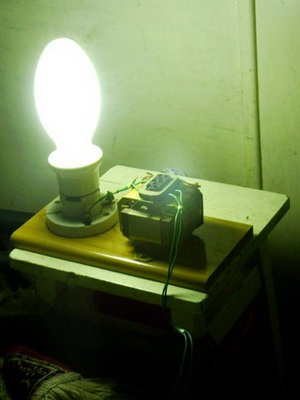
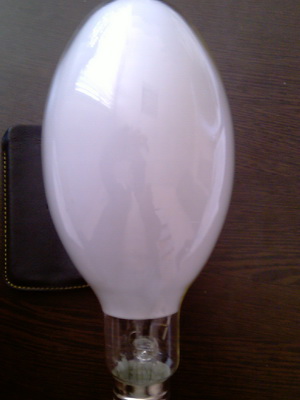
Arc mercury lamp high pressure (DRL) produces light by arc discharge in mercury vapor. Such lamps are started using ballasts. They have a high luminous efficiency: 50 - 60 lm per 1 W. The disadvantage is the glow spectrum: the light of these lamps is cold and harsh. DRL lamps are most often used for street lighting in cobra-type lamps.
Types of household LED incandescent lamps for home
Residential LED lamps were first developed in 1962 and have been gradually introduced into the lighting market since then. According to the principle of operation, LED incandescent lamps are the most common semiconductor, in which part of the energy, when an electric current passes through it, is released in the form of radiation or light visible to the human eye. The color of the radiation depends on the material of the semiconductor.
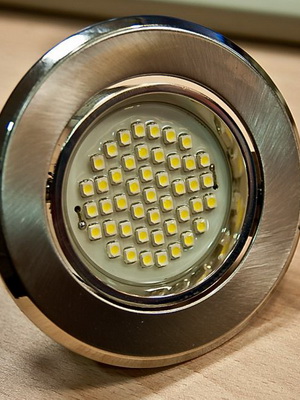

Such household LED lamps for the home are ten times superior to LON in all respects: durability, light output, economy, strength, etc. There are various types of LED lamps on sale that differ in lighting power, performance, size, durability and other characteristics.
The only drawback is the price, which is about 100 times the price of a conventional incandescent lamp. However, work on these unusual light sources continues, and it can be expected that a cheaper model will soon be invented.


